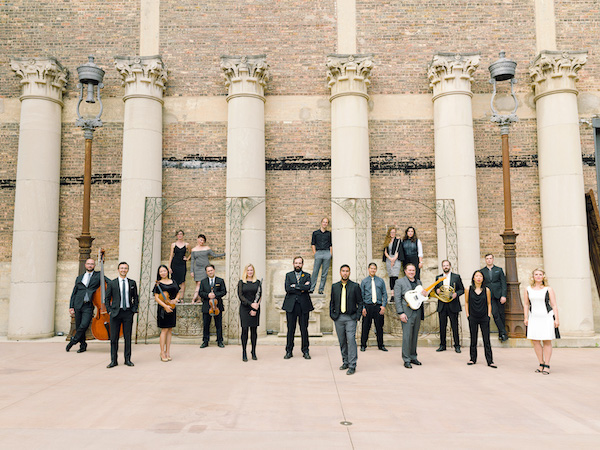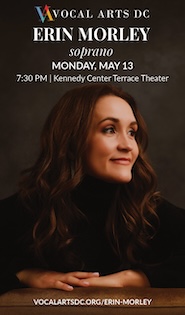Dal Niente breaks the musical lockdown with help from the Library of Congress

Even as the coronavirus pandemic has surged to its most devastating apogee in the United States this fall, music can still triumph.
The Library of Congress’s virtual concert season continued Friday night with an 80-minute program by Ensemble Dal Niente. The contemporary music group from Chicago recorded these performances at DePaul University, and listeners worldwide can stream the video on the Library of Congress’s website.
First came the world premiere of confined. speak., a new work by Igor Santos, commissioned by the McKim Fund of the Library of Congress. The composer, born in Brazil and now based in Chicago, has described the piece as an expression of the artistic limitations of musicians in lockdown. The sense of life bursting forth from destruction, as Carl Nielsen described in music in his Fourth Symphony (“The Inextinguishable”), comes across in several ways.
Running throughout the piece was a recorded track, incomprehensible speech from a loudspeaker, muffled by being placed inside a box. MingHuan Xu at first summoned forth only pitchless scrapes from her violin, noise that contrasted with the later epiphany of bowed notes, a D and then a G. Winston Choi likewise created storms of noise, scratching parts of the piano with a credit card. Sharp staccato notes at the top end of the keyboard often cut short the violin’s attempted phrases.
After this somewhat formless introduction, a sense of meter appeared in the middle section, into which more actual pitches were woven. Other metaphors for the musical strangulation of confinement appeared. In the third section, Xu wailed on the violin while it was dampened with a rehearsal mute over all the strings, matched by the piano played with the una corda pedal depressed. The effect was claustrophobic and powerful, perhaps channeling the lives of the performers, who are married and have two young children at home.
More pleasant sensations followed in De Memorias, a work for wind quintet by Tania León. The Cuban-born composer has said that she wrote the work for her teacher in Cuba, and references to the island’s ocean breezes, rustling trees, and singing birds abound. Almost all of the performers in the video wore masks, and the woodwind players covered parts of the instruments with protective bags, including the bell of the French horn, the end of the bassoon and clarinet, the mouthpiece of the flute, and the entire oboe.
Soprano Carrie Henneman Shaw performed without a mask, but like the wind players she was situated behind large plexiglass shields on stage. Three pieces featured the extraordinary range and flexibility of Shaw’s voice, beginning with Humming between Branches, a surrealist song cycle by Nur Slim. The composer, a woman born in Mexico City and currently in university there, wrote the piece for a fellow student and it pushes the soprano voice to its extremes.
Shaw’s performance of the work was a tour de force, skillfully negotiating the many demands of Sprechstimme, stratospheric squeaks, coughing, and frenetic speaking. In the eighth song, “Letter for B.”, she made noises by breaking sticks and tearing pieces of paper. The texts, not included in the program, remained a total mystery. Conductor Michael Lewanski coordinated these complex miniatures with patient skill.
Slim’s instrumental writing was equally enigmatic. In the hilarious third song, bassoonist Ben Roidl-Ward kept looking at his instrument, as if accusing it of being responsible for the flatulent noises it produced. Near the end, as a phone was heard ringing, he removed the top part of the bassoon and spoke into it like a phone receiver. The percussionist shouted and spoke in one song, and in another, the string players added rhythmic strikes with slap-sticks.
Shaw’s voice was almost imperceptible in Tinta Roja, Tinta Negra, by Luis Amaya, a composer born in Mexico and now based in Chicago. Long held notes hovered and went nowhere, sometimes accented by popped notes from electric guitar and harp. The soprano only hummed, and the whole haze of sound resonated and echoed through an amplified jarana, a guitar-like instrument from Mexico. These processed sounds lingered long after the musicians fell silent.
A more dramatic and humorous mood returned with Tomás Gueglio’s Lamarque Songs, an evocation of a melodramatic film in which the composer’s grandmother appeared as an extra. Ensemble Dal Niente presented the world premiere of this expanded version of the piece, now longer and with a larger instrumentation. Gueglio, born in Argentina and living in Chicago, identified the work as “Proustian.” That sense of nostalgia was especially prominent in the motifs whistled adroitly by Shaw.
Mexican composer Hilda Paredes described the final piece, Demente Cuerda, as a dialogue between the solo harp and the ensemble. The Mexican composer learned to play children’s songs on a simple diatonic harp, and a wistful mist hovered over much of the work. Some much-needed rhythmic impetus enlivened the middle section. Flutist Emma Hospelhorn was shown playing from a separate location. Although it was not clear why, the sight of her with headphones on and performing remotely put a fitting final touch on this pandemic-era concert.
The next virtual concert from the Library of Congress features violinist Jennifer Koh and pianist Thomas Sauer, 8 p.m. November 19. loc.gov



